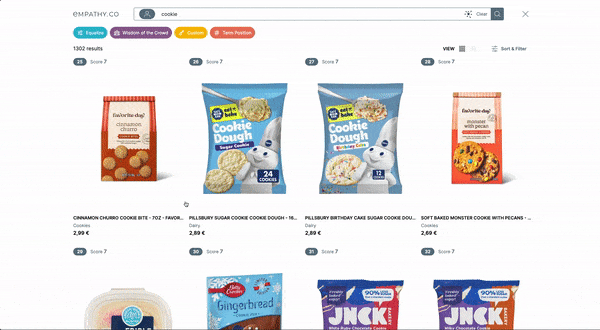Findability 2.0: A Deeper Way To Measure Search Success
Findability 2.0: A Deeper Way To Measure Search Success
Search has become the centre of the customer experience. Customers count on Search far more than traditional navigational guides to find and discover. In fact, a failed search experience can be the most annoying scenario for a customer. Search and Discovery have exceptional power to trigger feelings, and therefore they need to be looked at carefully and creatively to ensure that those feelings are positive.
Traditionally, the success of a process is measured by static indicators that may ignore customers’ feelings and level of commitment. For instance, the conversion rate in the commerce world seems to be the unique indicator that matters, but the real fact is that we always need to understand the context: how people feel when using our product, whether we are answering their questions or not, and also whether we create an entertaining, enriched and joyful experience. We consider all these factors, in addition to the conversion or attribution rates.

Search is such a subjective world in which analysts, need to create objective metrics that help us to understand whether consumers found what they were looking for. With this definition in mind, at Empathy in the early days we developed the concept of Findability, a key metric to understand search performance.
Findability indicates the ability of a consumer to identify an appropriate result or set of results that render satisfaction. That being said, how do we measure it?

Measuring Findability
Measuring how successful consumers are in finding their objectives, requires an approach that connects each query to each effort level from the intent to the click. The parity between a consumer’s query and the derived clicks are the essence of the Findability measurement. And we need to understand the context of this click.
- How many queries were made before the click?
- How was the search refined before the click?
- Was the click on a product from the first page or a subsequent one?
The context is important because it shows the effort that a user has taken to find what they were looking for. For instance, a search where the click occurs on page 3 indicates that the user has viewed two pages without finding something relevant for the initial query.

From the start, this formula allowed us to learn from user feedback and improve the experience by modifying the relevance of the results and reorganizing products based on this metric.
The new Formula
Successful searches elicit positive emotional responses, and this fact will only rise in significance as more brands join the growing movement for human-centred practices. Now we are moving to a new findability formula that includes in the equation the position of the product clicked, not just the page. We know that a click in a top product indicates that the experience is better than a click when scrolling is needed to select the desired product.

The Findability is calculated for the position of each query, and all the values are added for the determined period of time. Then the average is established and multiplied by 100 to show the final percentage.
The reason why minus 1 is subtracted in the formula of the value of position is to obtain f (1) = 1, ie, for position 1 to have value 1, thus position 1 represents 100% Findability. In other words, if we do not subtract, position 0 (which doesn’t exist) would have the value of 100%.
The parameter controls the decay of the function, and it represents the position where the Findability value is equal to 50%.The value of the parameter must be chosen between two appropriate values studied, 70 or 100. These are the graphs of both functions.
Conclusions
A good search experience succeeds because it is part of a customer-centric strategy that is based on the emotions that a search can generate in the user, but not so focused on the conversion rate.
The objective is to help customers connect with content and to make it possible to measure the quality of results. If customers cannot connect to the right product in the catalogue or discover new related products that enhance the search experience, they will probably not come back to the site.
By redefining the Findability formula, we are gaining fresh insights into customers’ search experience. Examining that experience at a query level, you too may find valuable insights and apply corresponding actions to your own catalogue. Check out our paper about Site Search Analytics if you wish to know more about search measurement. Make your products findable, but more important, make your customers’ search journey a happy one!










